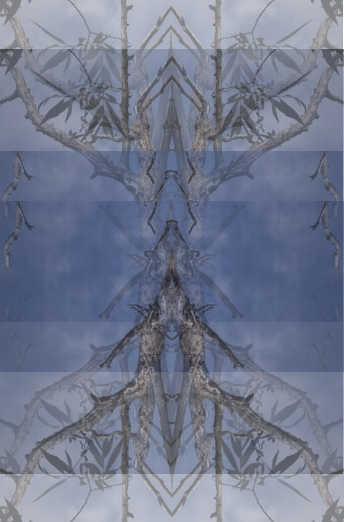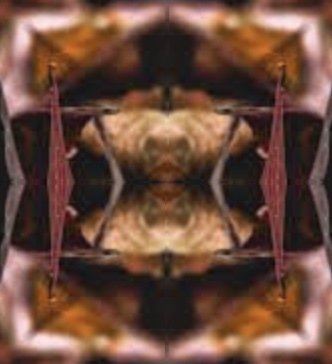I have left off last week with a sketch (more detailed than earlier) of the ontological layout implicit in Jungian thought; and I have noted that there are several passages in Jung’s work where he outlines those same ontological categories. Let’s examine one of those more closely.

1. In his 1931 lecture on “Das Grundproblem der gegenwärtigen Psychologie” (GW VIII, §§ 649-688) Jung describes an antinomy encountered by the psychology of his time. The antinomy emerges because, like any discipline, psychology has to rely on some basic ideas regarding what is real and what isn’t: “Wir müssen eine Realität, einen realen Erklärungsgrund haben, auf den wir uns berufen können” (§ 679). But the dominant view at the time was a narrow materialism (§ 649), itself a reaction against an equally narrow idealism of earlier centuries; very roughly put, the materialism of the modern, scientific age had replaced its mediaeval counterpart: “wir [haben] die Neigung […], vorzugsweise aus Physischem zu erklären, weil man früher zu viel aus dem Geist erklärt hat.” (§ 657) According to Jung, there are good reasons to adopt either view, but they tend to exclude each other, hence the antinomy.
We should note in passing that the sharpness of the dilemma is partly an artifact of the formulation Jung gives it. Since he wants to present his own view as a synthesis which resolves and supersedes it, he exaggerates the one-sidedness of each of the two views; and in order to let them appear symmetrical, he suppresses an important difference between them. For the materialism he sketches (and the context in which it belongs, the modern, scientific world view) is not only an ontological theory. It originates from a methodological attitude. The idea that only material objects are real (and everything else we might talk about is not) is not simply something that is posited: it is something arrived at after following a certain method. (For which there are good, and well-known reasons.)
Jung’s presentation conflates these:
As “scientific” and thus admissible only counted that which was either recognizably material or derived from causes that could be perceived by the senses.
Als “wissenschaftlich” und damit als überhaupt zulässig galt nur das, was entweder als materiell erkannt oder aus sinnlich wahrnehmbaren Ursachen abgeleitet werden konnte.
GW VIII, § 649.
The wording here is revealing: Jung doesn’t cite what is real (according to materialism), but what counts as “scientific” or is admissible, respectively. He thus introduces materialism not as candidate answer for his guiding question (which was, to recall: “Wir müssen eine Realität, einen realen Erklärungsgrund haben”; § 649), but rather as a norm of inquiry.
Consider an example. Suppose I point at a mountain in the distance and claim that it is “real”; then I tell you that I know of a golden city, located beyond that mountain, which is also “real”. You would probably accept the former claim, but doubt the latter. That’s just sensible: the mountain presumably is real, the golden city likely isn’t. What doesn’t make sense, however, is to say that the golden city is “not scientific”, or “not admissible”. These terms don’t apply in a discussion of what’s real and what isn’t. But now suppose that I tell you how we can figure out whether the golden city is real or not. I then suggest “I have a book, written by a village elder four-hundred years ago, and it says that there’s a golden city there”. Now this is a claim about which we’d say things like “That’s not scientific!” or “This is not admissible!”. Because now I haven’t suggested a theory of what is real, I have suggested a method. (Not a very convincing method, of course: for the way to find out whether there’s a golden city behind the mountain is not by quoting an ancient book; it’s to go there and have a look.)
The main difference between a modern, scientific attitude and a mediaeval one is not simply that it has a materialist ontology rather than an idealist one. It’s that it follows a methodology of observation and intersubjective verification, whereas the mediaeval attitude was grounded in authority: in order to demonstrate something, one would quote scripture or Aristotle. But this aspect is lost in the way in which Jung frames the starting point of his line of thought.
2. Another problem emerges at the conclusion of the lecture, where he recommends his own view. Jung’s argument is that the materialist ontology leaves us with a blind spot, where important conditions for what goes on in the psyche are left out (suppressed or forgotten). What exactly does he point to?
Wir wissen zwar heute, daß es geistig bedingte Wandlungsprozesse in der Seele gibt […], aber es ist uns noch nicht gelungen, ihre eigentümliche Gesetzmäßigkeit festzustellen. Wir wissen nur, daß ein großer Teil der Neurosen auf einer Störung dieser Prozesse beruht. (§ 688)
The broader goal, where his own solution is supposed to lead, is to enable an account for these kinds of “geistig bedingte” conditions:
Nachdem die bisherige Entwicklung der Psychologie ein Hauptgewicht auf die physische Bedingtheit der Seele gelegt hat, wird die zukünftige Aufgabe der Psychologie die Erforschung der geistigen Bedingtheit des seelischen Prozesses sein. (§ 687)
But this is circular. Consider: if there are processes in the psyche whose characteristic regularities (“eigentümliche Gesetzmäßigkeiten”) are unknown, then how can we know that they are what Jung calls “geistig bedingt”? How do we know that they aren’t materially conditioned? Yet Jung claims, as if it were factual, that they are.
Again, the wording is revealing here. When Jung says “we know today that …”, he uses a phrasing which typically indicates a statement of scientific consensus. But it can hardly be scientific consensus that there are non-materially conditioned psychological processes — for remember that Jung has started out by explaining that the scientific consensus is a strict and narrow materialism. So who, in this sentence, is “we”?
And note that the mere fact that a materialist account cannot (yet) explain everything that goes on in the psyche is not sufficient for Jung’s claim; for obviously, so neither can Jung’s, or any other account based on non-material conditions. For that reason, Jung presents his account as a research program, rather than as an explanation, and of course he’s right to do so. But then by the same token, he cannot simply argue against materialism from a gap in its results: materialist approaches can, and in fact have, presented similarly promising research programs, and continue to do so to this day.
The claim that there are specifically non-material processes in the psyche, then, should not be seen as a fact (on which to base theories), but rather as an assumption, or hypothesis, made in the hope that fruitful research can flow from exploring it.
3. But let’s for the moment grant Jung’s starting point (the conflict between materialist and idealist ontologies) and the goal (an ontology that can back up the investigation of both material and non-material, i.e. “geistige” conditions of psychological phenomena). Given these, what is his actual proposal in the lecture?
Jung proceeds in two steps. First, he restricts the scope of what counts as “real” to psychological episodes, and thus declares the metaphysical status of both their material and non-material conditions as “unknowable”. Secondly, he maintains nonetheless that, since there are certain markers in psychological episodes which indicate either a material or a spiritual (“geistigen”) origin, we must posit both material and spiritual conditions for the psyche. (About neither we can thus make metaphysical statements, but we can distinguish them from their appearance in psychological episodes, presumably sufficiently so in order to categorize them into these two categories.)
First, then, the exclusive reality of psychological episodes:
zweifellos ist [das Psychische] unsere einzige unmittelbare Erfahrung. Alles, was ich erfahre, is psychisch. Selbst der physische Schmerz ist ein psychisches Abbild, das ich erfahre; alle meine Sinnesempfindungen, die mir eine Welt von raumerfüllenden, undurchdringlichen Dingen aufzwingen, sind psychische Bilder, die einzig meine unmittelbare Erfahrung darstellen, denn sie allein sind es, die mein Bewußtsein zum unmittelbaren Objekt hat. […] Alles, was wir je wissen können, besteht aus psychischem Stoff. Psyche ist das allerrealste Wesen, weil es das einzige Unmittelbare ist. (§ 680)
The position which Jung articulates here is generally called phenomenalism. The point a phenomenalist puts center-stage is that we do not know anything about things as such, but only have access to the way in which they appear to us (“phenomena”, from Greek, means “appearances”). Thus all we have, when we observe the items of the external world, are impressions which come through the senses (also referred to as “sense data”). These appear in our experience as psychological episodes (e.g. perceptions), and from them we can only infer what they represent (i.e. what we think of as a world of objects in space and time).
Now secondly,
it appears as if certain contents or images issue from a so-called physical environment, which also includes my body, and others from a so-called spiritual (geistig) source, which seems to be distinct from the physical things
erscheint es uns, als ob gewisse Inhalte oder Bilder von einer sogenannten physischen Umwelt, zu der auch mein Körper gehört, herrühren, andere kommen aus einer sogenannten geistigen Quelle, die von den physischen Dingen verschieden zu sein scheint
GW VIII, § 681.
Thus what Jung proposes is a distinction among markers on ideas (Vorstellungen). Some of these markers reflect origins in the external world (the world of spatiotemporally individuated things), whereas others reflect origins in a system of ideas (Geist). It is true, this distinction is one not normally made by other thinkers who held a phenomenalist view: generally, they counted only Vorstellungen about the external world, which were mediated by the senses (thus: “sense data”).
And although Jung presents it as a distinction (between material and ideal origins), the point here is not so much to keep them apart; it’s rather that any psychology which wants to be complete needs to include them both, since both effectively lead to psychological episodes:
Ob ich mir nun vorstelle, was für ein Auto ich mir kaufen möchte, oder in was für einem Zustande die Seele meines verstorbenen Vaters sich gegenwärtig befindet, ob mich eine äußere Tatsache ärgert oder ein Gedanke, ist psychisch gleich real. Nur bezieht sich das eine auf die Welt der physischen, das andere aber auf die Welt der geistigen Dinge. (§ 681)
So we might call Jung’s suggestion an extension rather than a distinction. But the main point is neither the distinction inside nor the extension of psychological contents — it’s the proposal to no longer count the material basis of the external world as reality:
Wenn ich meinen Begriff von Realität auf die Psyche verschiebe […] so hört damit auch der Konflikt zwischen Natur und Geist als Erklärungsgründen auf. Sie werden zu bloßen Herkunftsbezeichnungen für psychische Inhalte, die sich in mein Bewußtsein drängen. (§ 681)
This brings the foreground argument of the lecture full circle: the originally presented conflict (viz. section 1 above) between materialism and idealism (here as “Natur” and “Geist”) would be resolved (or dialectically aufgehoben), and the broader goal of integrating spiritual contents into psychology (section 2) would be enabled.
4. There are indicators that the latter is, for Jung, the more important objective. In fact there is no need to suggest a “paradoxical nature” or a “conflict” here. For why shouldn’t there simply multiple origins of experience?
The conflict that Jung refers to is a conflict of metaphysical systems (materialism and idealism), and it results because these systems present themselves as monistic. (As we have seen above, it is also unnecessarily sharpened because in his lecture, Jung underdescribes it as merely a conflict between ontologies, whereas in reality these ontological systems have pragmatic and methodological aspects which he leaves out.)
Better than presenting his idea as one that resolves an ontological conflict, Jung should have emphasized his proposal’s extending our world view, so that it includes the recently found insights from depth psychology. And in fact, this is where he directs the argument of the lecture in its final portion towards that direction. Employing his proposal, he suggests,
gewinnen wir die Möglichkeit, jener Seite des Seelischen, das sich in Aberglauben und Mythologie, in Religionen und Philosophie ausdrückt, gerecht zu werden. (§ 683)
Possibly the reason Jung preferred the more dramatic notion of a conflict is a inheritance (already quite buried) of philosophical methodology: it appears to be a form of dialectic rather dominant about a hundred years earlier, following the scheme of thesis, antithesis, and synthesis. In order to make the synthesis appear necessary in that scheme, there has to be a seemingly insurmountable conflict or contradiction (contradiction is, in dialectical methodology, what drives the development). So Jung is, quite unfortunately, mixing approaches from idealist philosophy and logical positivism here. (Since he himself makes no reference to either of these contemporary influences, the inheritance may well have been unreflected, too.)
The upshot of all this is that we should concentrate rather less on this supposed conflict and the task of resolving it, and focus on the benefits we might nonetheless see from Jung’s approach (driven, as it is, by a fundamentally different methodological choice, rather than an alternative ontology).
Nonetheless, there is an important insight behind it. Apart from the phenomenalism, in this lecture Jung draws a sharp contrast between psyche (Psyche and sometimes Seele and das Seelische) and spirit (Geist). (This is essentially step 2 above.) These are quite separate, but equally fundamental concepts, on the same level as matter (das Materielle). So we do have a kind of tripartite ontological layout here. It is different from the one I have sketched earlier in that it assigns the qualification “real” only to the psyche, and denies it to both matter and spirit. (That is the phenomenalism, in step 1 above). In that way, it is closer to the monism of the imaginary that I have previously dubbed Jung-Hillman metaphysics. And there is a host of problems with that idea, which we’ll have to discuss in more detail. But the important insight, despite these inconsistencies, still stands. Jung has later summarized it thus:
Die grosse Schwierigkeit […] besteht darin, dass der Gegensatz nicht lautet: Physis versus Psyche, sonder Physis versus Pneuma, während die Psyche das Medium zwischen den beiden darstellt. Man hat in der neueren Geschichte den Geist in die Psyche einbezogen und ihn mit der Funktion des Intellektes identifiziert. Dadurch ist der Geist sozusagen aus unserem Gesichtsfeld verschwunden und durch die Psyche ersetzt und es fällt uns schwer, dem Geiste eine Autonomie und Wesenheit zuzuerkennen, wie wir sie dem Stoffe ohne Zögern erteilen.
Letter to Pauli (May 4th, 1953), PJC 117.
(The more extended version of this line of thought is in the spirit essay, GW IX/I, §§ 390-392; note also that “spirit” here means something very different from what it means in the distinction Hillman makes, even though it uses the same terms.)



